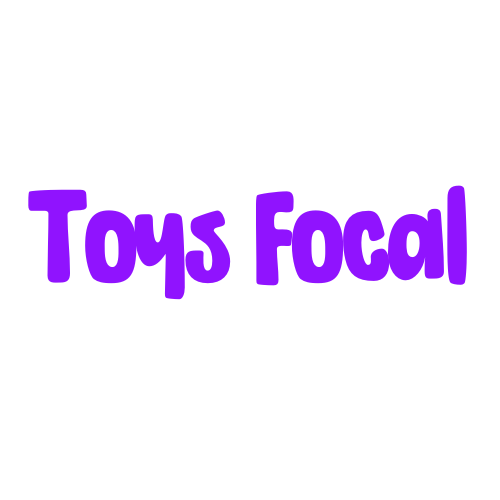Disclaimer: This post contains affiliate links. If you use these links to buy something, we may earn a commission at no extra cost to you.

Sensory toys provide a unique and powerful way for people of all ages to interact with their environment, develop essential skills, and find both joy and relaxation.
These specialized toys target our senses – touch, sight, sound, smell, movement, and even body awareness – and are incredibly valuable for growth and well-being.
Plus, you’ll find expert videos and resources for even more insight into the power of Play & Toys!
Join Our Community!
Sensory Toys Categorization by Sensory Type
| Sensory System | Descriptions, Benefits and Examples of Sensory Toys |
|---|---|
| Tactile (Touch) | Toys that provide tactile stimulation through touch. Benefits: Promotes fine motor development, can provide calming or stimulating input depending on the toy. Examples Include: Squishy toys (stress balls, modeling clay), Textured balls and fabrics, Kinetic toys, Slime, oobleck, water beads, Liquid motion toys |
| Visual | Toys that engage the sense of sight. Benefits: Encourages visual tracking and attention, can be calming or stimulating depending on the visual effects. Examples Include: Light-up toys, Fiber optic lights, Bubble tubes, Glitter jars |
| Auditory (Sound) | Toys that create sounds or focus on auditory input. Benefits: Develops auditory processing and awareness, can promote focus or relaxation. Examples Include: Musical instruments (shakers, tambourines), Toys with sound effects (crinkling toys, squeeze toys with noises), Nature sounds/white noise machines |
| Vestibular (Movement & Balance) | Toys that promote movement and balance awareness. Benefits: Supports body awareness, coordination, and can be helpful for regulating energy levels. Examples Includes: Swings, Trampolines, Rocking toys, Balance beams |
| Proprioceptive (Body Awareness) | Toys providing deep pressure or input related to body position. Benefits: Provides deep pressure input, which can be calming and help with focus. Examples Includes: Weighted blankets and vests, Compression garments, Vibration toys, Resistance bands |
| Olfactory (Smell) | Toys that engage the sense of smell. Benefits: Can trigger positive associations and memories, can be used to promote relaxation or alertness depending on the scent. Examples Includes: Scented playdough or slime, Aromatherapy diffusers, Scratch-and-sniff stickers |
Popular & Trending Sensory Toys on amazon.com
- Montessori Sensory Toys for Toddler on amzon.com
- Pop Tubes Sensory Toys on amazon.com
- BUNMO Super Sensory Stretchy Strings on amazon.com
- Squishy Sensory Toys for Kids Toddlers on amazon.com
- Fidget Toys Set on amazon.com
Age-Specific Recommendations
Let’s delve into how sensory toys can be tailored to different developmental stages:
Baby Sensory Toys (0 – 12 Months)
- Focus on soft textures, high-contrast patterns, gentle sounds, and safe items for mouthing.
- Examples: Textured rattles, soft crinkle toys, light-up mobiles, teethers.
Toddler Sensory Toys (1- 3 Years)
- Toddlers crave exploration! Introduce messier textures, more active movement toys, and simple cause-and-effect toys.
- Examples: Water play tables, finger paints, fidget toys, push-and-pull toys, swings.
Preschool Sensory Toys (3 – 5 Years)
- Imaginative play meets sensory input. Building materials, role-play with textured props, and music creation get exciting.
- Examples: Kinetic sand, playdough with tools, dress-up clothes, with various fabrics, simple musical instruments.
Grade Schooler Sensory Toys (6 -12 Years)
- Kids this age can still benefit from sensory regulation and focus tools.
- Examples: Fidget toys, weighted lap pads, trampolines, nature exploration kits with magnifiers.
Adult Sensory Toys
- Adults also find relaxation, focus, and enjoyment from sensory experiences.
- Examples: Fidget toys, Weighted blankets, stress balls, aromatherapy diffusers, noise-canceling headphones.
Choosing the Right Sensory Toys
- Observe your child: Notice what textures, sounds, and movements they are drawn to or avoid. This helps customize sensory offerings.
- Safety first: Always supervise play and choose toys that are age-appropriate and don’t contain small parts or choking hazards.
- Variety is key: Offer a wide range of sensory experiences and rotate toys regularly to keep them engaging.
Sensory toys are a fantastic investment in learning, development, and well-being for all ages.
Note: This article is intended for informational purposes. Always consider your individual child’s interests and developmental needs when selecting toys.
Let’s help parents choose the best toys! Share this if you agree.
Resources
- Pathway Org – Simple Sensory Activities for Baby
- National Institute for Play – How We Play
- Toy Industries of Europe – What makes a toy safe?
